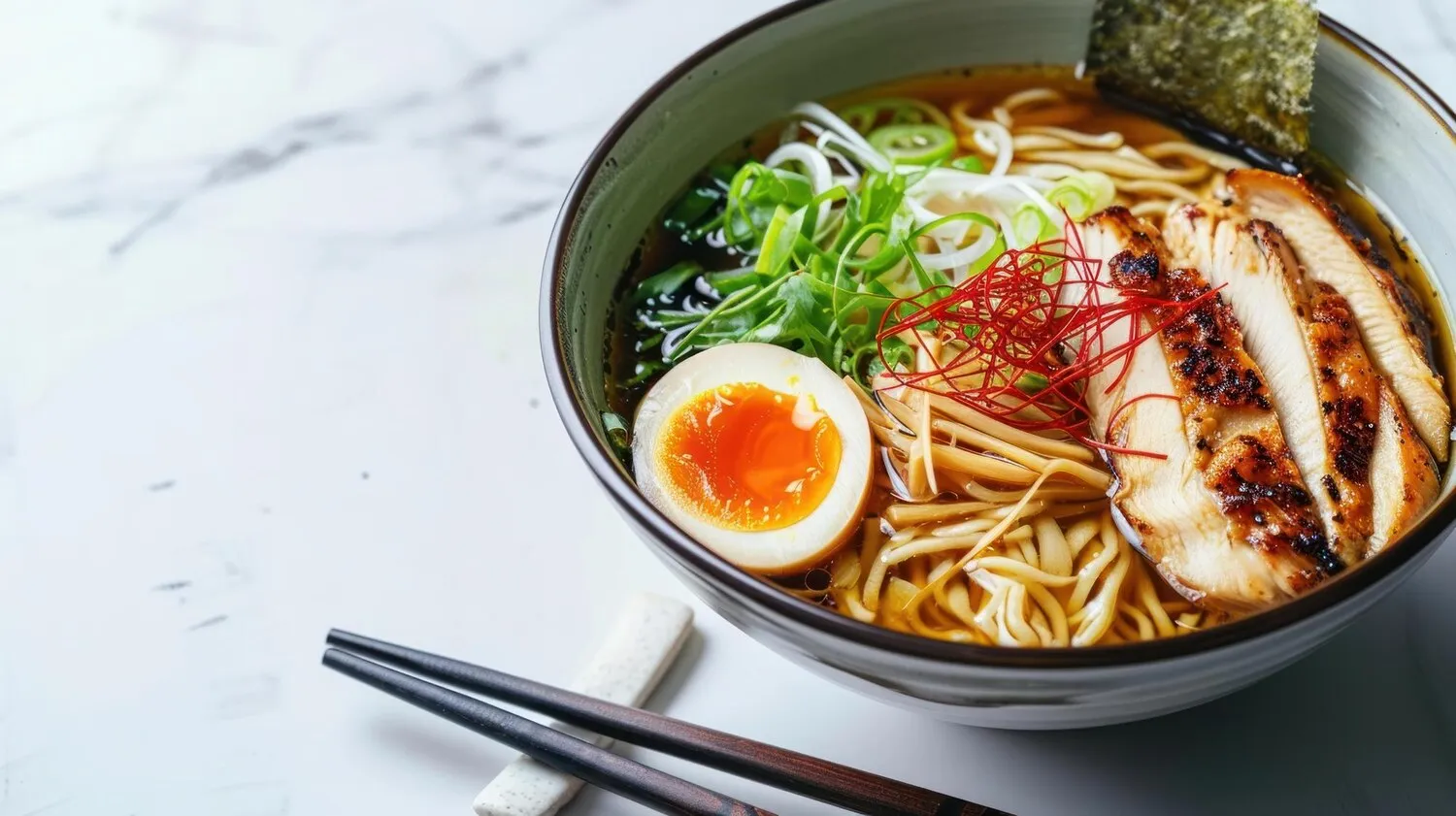
Ramen
Takumi Ramen Kitchen offers a variety of ramen dishes with rich and flavorful broths, fresh noodles, and various toppings such as chashu pork, bamboo shoots, and seaweed.
Nutrition Facts
* The % Daily Value (DV) tells you how much a nutrient in a serving of food contributes to a daily diet. 2,000 calories a day is used for general nutrition advice.
Takumi Ramen Kitchen
Ramen's origins are traced back to Chinese wheat noodles, which were introduced to Japan in the late 19th or early 20th century. The dish evolved in Japan, adapting to local tastes and ingredients, eventually becoming the distinct ramen we know today.
Ramen is more than just a meal in Japan; it's a cultural icon and a source of national pride. It represents a comforting and affordable food, readily available and deeply ingrained in daily life.
Regional Variations
Different regions of Japan have their own unique ramen styles, reflecting local ingredients and preferences. For example, Hakata ramen is known for its creamy tonkotsu broth, while Sapporo ramen is famous for its miso base.
Ramen Shops
Ramen shops (ramen-ya) are ubiquitous in Japan, ranging from small, family-run establishments to large chain restaurants. They often specialize in a particular style of ramen.
Slurping Etiquette
Slurping ramen is not considered rude in Japan; in fact, it's believed to enhance the flavor and show appreciation for the dish. It also helps to cool down the noodles as you eat them.
Ramen boasts a complex and savory flavor profile, built upon a rich broth and complemented by a variety of toppings. The interplay of umami, saltiness, and richness is key.
The broth, the foundation of ramen, is typically made from pork, chicken, fish, or a combination thereof, simmered for hours to extract maximum flavor. Common flavorings include soy sauce (shoyu), miso, salt (shio), or pork bone (tonkotsu). Noodles, made from wheat flour, vary in thickness, shape, and texture. Toppings like chashu (braised pork belly), menma (bamboo shoots), nori (seaweed), negi (scallions), and ajitsuke tamago (marinated soft-boiled egg) add further layers of flavor and texture.
Broth First
Always start by tasting the broth to appreciate its flavor before adding any toppings.
Customization
Many ramen shops allow you to customize your order, such as specifying the noodle firmness, broth richness, and spice level.
Add-ins
Don't hesitate to add condiments like chili oil, garlic, or sesame seeds to enhance the flavor to your liking.
Noodle Speed
Eat the noodles quickly, as they can absorb the broth and become soggy over time.
Explore additional Ramen dishes and restaurants
Explore RamenDiscover top dining spots and culinary experiences in Antwerpen.
Explore AntwerpenLearn more about the food culture, restaurant scene, and culinary heritage of Belgium.
Explore Belgium